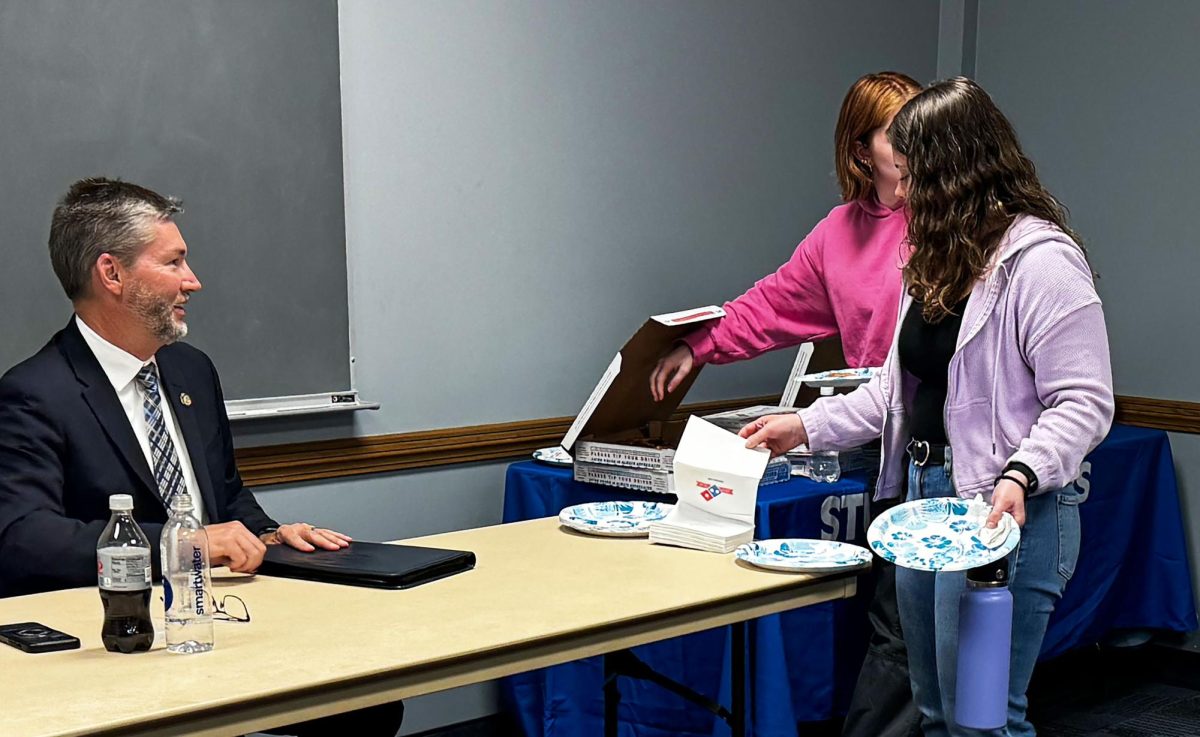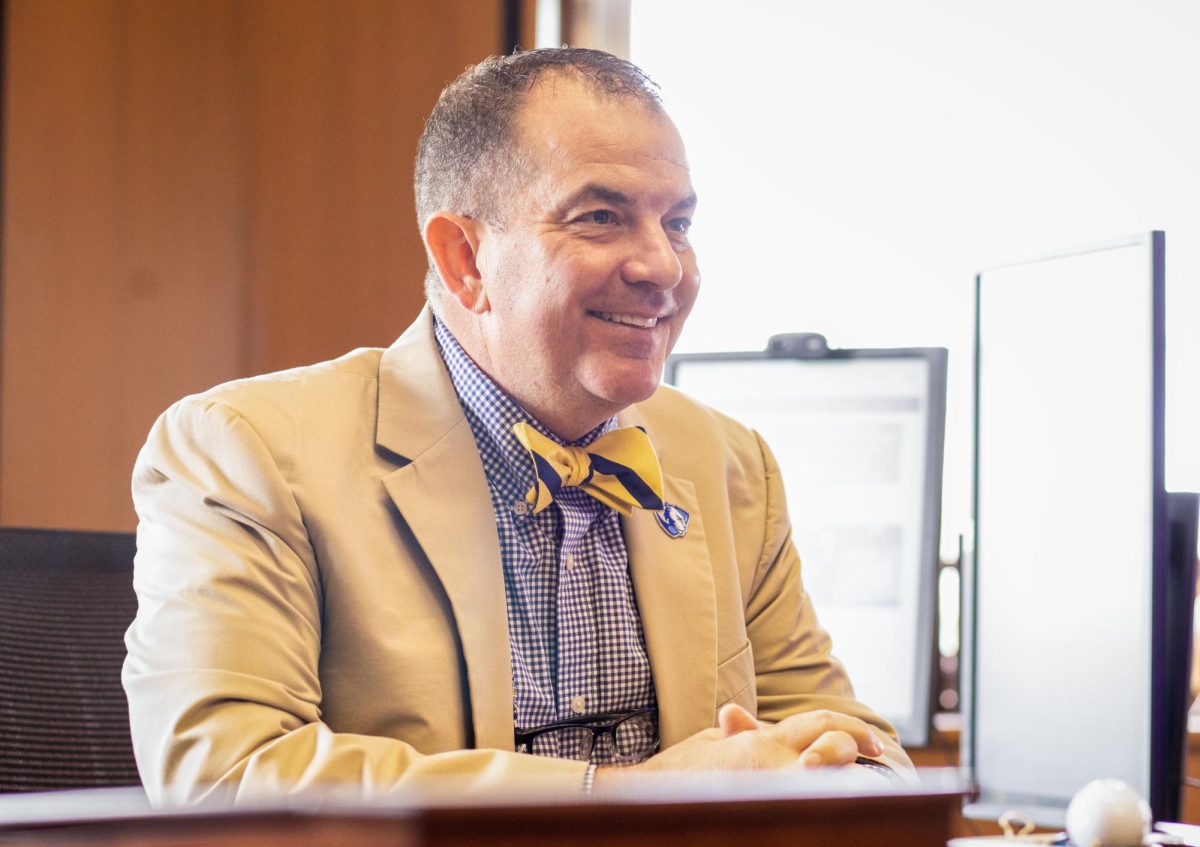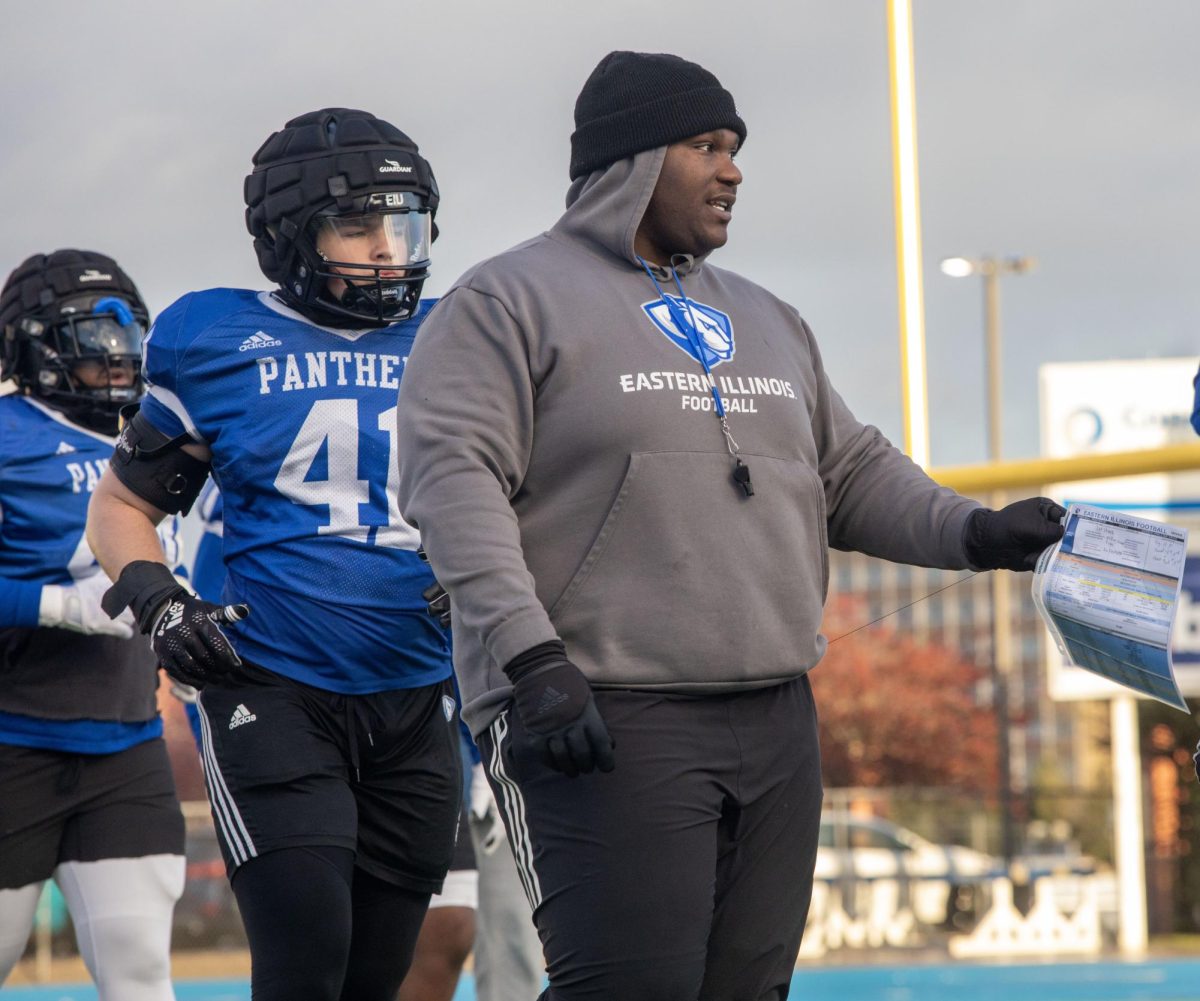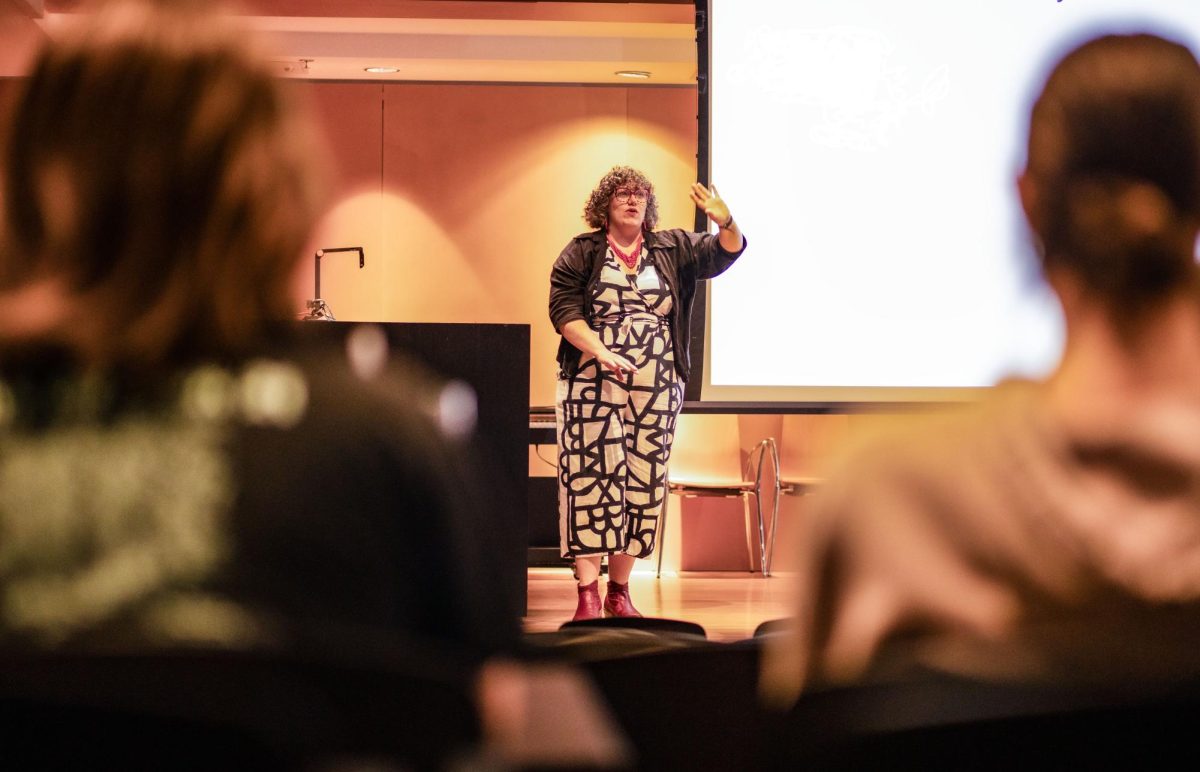COLUMN: ‘The House’ displays real life situations in a unique way
Cam’ron Hardy is a sophomore journalism major and can be reached at 581-2912 or [email protected].
March 7, 2023
“The House” displays the problems of materialism, loneliness, and complacency in three parts in stop-motion animation. The similarity within these parts is that all of them take place within the same house.
The first part, titled “And heard within, a lie is spun,” tells the tale of a poor family that acquires a luxurious home from an architect at no charge.
Shortly after moving into the home, parents, Raymond and Penelope (Matthew Goode and Claudie Blakely), are too mesmerized by the luxuries to notice anything else.
Their daughters, Mabel and Penny (Mia Goth) are the only ones not diverted by the house. The layout of the home changes and Mabel and Penny are trapped in a maze and are unable to get back to their parents.
Eventually, they do reconnect with their parents, but they have been turned into a chair and curtains. A fireplace their father failed to light for most of the time has finally been lit until he lights it with the family’s valuables.
Eventually, the house catches on fire, killing the parents as Mabel carries Penny away. The message behind this part was valuable and could be relatable to viewers.
The part where the parents were turned into couches and curtains was great because in real life, these materialistic items become a part of people. People live for the next big trendy or popular object and have no other real values.
People value these objects a lot higher than more important things such as their lifestyle, which is displayed in the film. The eerie and scary ambiance made this part better.
The second part is about a rat selling his house. He promises the realtor that he has about 20 guaranteed buyers before the viewing. Shortly before the viewing, he realizes that the house is infested with rodents. He battles them throughout the entire story.
The day of the viewing of the house comes and the main character makes the viewers uncomfortable and everyone except one couple rejects the home.
The couple that stays and likes the house repeats, “we are very interested in your home.” The main character gets excited with their statement, but as the night goes on, the couple never leave the house, and they ask if they could spend the night there.
They stay there for several days and eventually invite their family members over and talk to the main character as if he is their servant. As the main character stresses all his mishaps, his house rots and he became one with the rodents.
This story was complex to understand the meaning, but the main topic discusses loneliness.
The main character is trying his best to get rid of the house and he has all these insecurities within the home that he loses himself and falls into the dilemmas in the house.
The main character covered a hole in the house to close in the rodents and at the end of this part, we see him crawl back into the hole and live the natural rat life.
The cinematography in this story was good. For it to be a stop motion film, there were some scenes that were impressive.
The entire story connects of the 2017 psychological film “Mother!”. The theme of this movie is about climate change. Throughout this movie, people enter a couple´s house and the mother (Jennifer Lawrence) becomes overwhelmed with all these different people destroying their home.
When the couple’s family members started showing up, it mirrored the entire “Mother!” story line.
That stated, climate change could be another theme of this film. The ending when the main character becomes one with the rats could be the point when pollution and climate change takes over and everyone is living in irreversible damage together.
There are different ideas that the audience could take away which is a positive and could lead viewers to a discussion and can learn different point of views.
The final story is about Rosa (Susan Wokoma) who lives in a house surrounded by water, which is rising, with 2 other tenants, Jen and Elias (Helena Bonham Carter and Will Sharpe). Rosa has plans to perfect her home.
Jen’s “spirit partner” Cosmos comes and tells Rosa he could help with the house. The next morning Rosa discovers that Cosmos ripped up the floorboards to build a boat for Elias.
Elias has supposedly been wanting to leave and so he does after the boat is built. Shortly after, Jen and Cosmos leaves, leaving Rosa alone.
Cosmos built a platform on the house so it could move on the water, which Rosa uses after everyone left her. Rosa had a negative view of leaving due to now knowing what could be out in the rest of the world.
Eventually, Rosa does leave along with Elias, Jen and Cosmos and sail into the unknown. The theme in this story was complacency. Staying in the same position withholds people from unknown opportunities, which is represented in this part.
The cinematography in this part was also well put together along with the voice acting of Susan Wokoma. Her character sounds devastated throughout most of the story, especially when she vents to Jen. Her emotion could be felt exclusively through dialogue, which is impressive.
This part felt the most relatable because being complacent is such an easy thing to fall into and the supporting characters were great for visualizing different ways people can stay in the same place and how they could break the mindset.
This was a well put together film with a heavy appreciation for the stop motion animation. Connecting a film style that is common among children take on mature topics is unique.
Rate : 3/5
Cam’ron Hardy is a sophomore journalism major. He can be reached at [email protected] or 217-581-2812.
















































